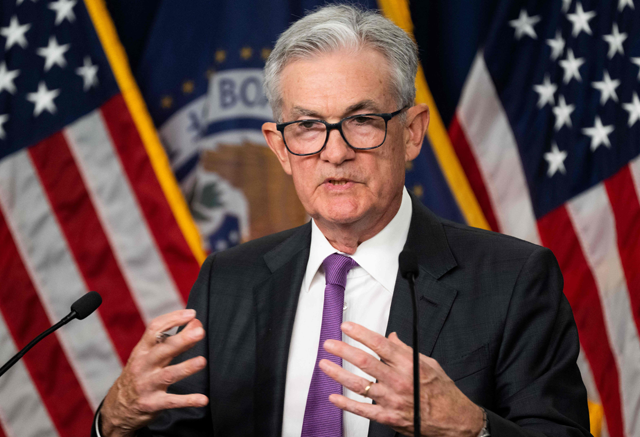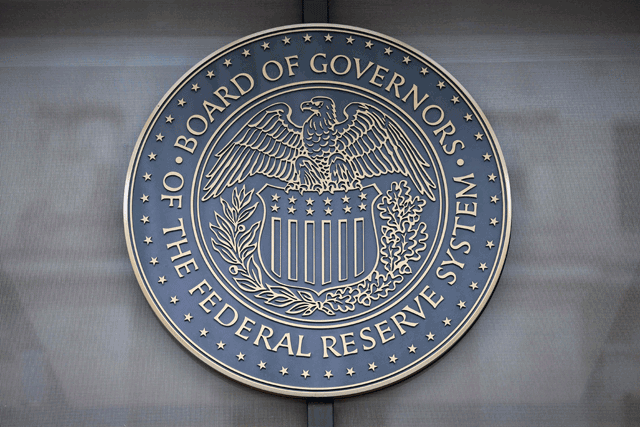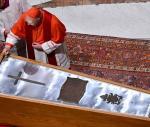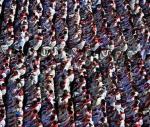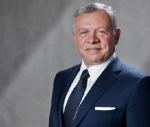You are here
Fed raises rates, signals confidence in strengthening economy
By Reuters - Mar 21,2018 - Last updated at Mar 21,2018
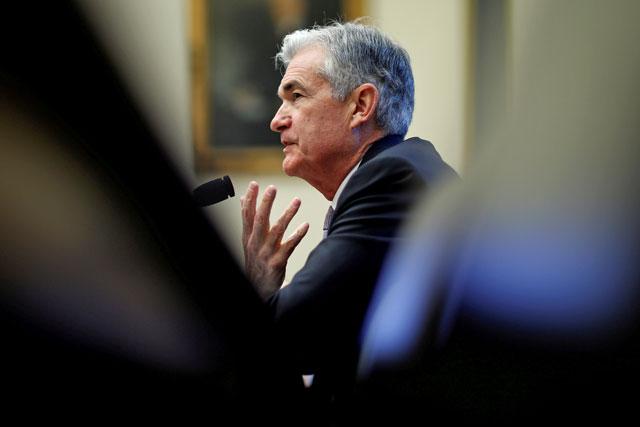
Federal Reserve Chairman Jerome Powell delivers the semi-annual Monetary Policy Report to the House Financial Services Committee hearing in Washington, US, February 27, 2018 (Reuters file photo)
WASHINGTON — The Federal Reserve raised interest rates on Wednesday and forecast at least two more hikes for 2018, signaling growing confidence that US tax cuts and government spending will boost the economy and inflation and lead to more aggressive future tightening.
In its first policy meeting under new Fed chief Jerome Powell, the US central bank indicated that inflation should finally move higher after years below its 2 per cent target and that the economy had recently gained momentum.
The Fed also raised the estimated longer-term "neutral" rate, the level at which monetary policy neither boosts nor slows the economy, a touch, in a sign the current gradual rate hike cycle could go on longer than previously thought.
"The economic outlook has strengthened in recent months," the Fed said in a statement at the end of a two-day meeting in which it lifted its benchmark overnight lending rate by a quarter of a percentage point to a range of 1.5 per cent to 1.75 per cent.
Inflation "is expected to move up in coming months and stabilise" around the Fed's target, it said.
The rate hike was widely expected. All 104 economists polled by Reuters from March 5-13 said the Fed would increase borrowing costs this week.
The move was the latest step away from years of stimulating the world's largest economy in the wake of the 2007-2009 financial crisis and recession. The Fed tightened policy three times last year.
The combination of $1.8 trillion in expected fiscal stimulus and recent hints of price and wage pressures had prompted some Fed officials to speculate more Americans could be drawn into an already tight labour market and that inflation could rise to the target, or even well above if the economy got too hot.
Policymakers were largely split on Wednesday as to whether a total of three or four rate hikes would be needed this year. They predicted rates would rise three times next year and two times in 2020, a further indication of confidence in the economy.
The Fed's preferred measure of inflation was expected to end 2018 at 1.9 per cent, unchanged from the previous forecast, but it is seen rising a bit above the Fed's target next year.
The US unemployment rate by the end of 2018 is expected to edge down to 3.8 per cent, indicating the Fed sees more room for the labour market to run. Fed officials predicted the rate also would settle even lower at 4.5 per cent in the longer run.
US joblessness stood at 4.1 per cent last month.
While recent home sales and retail spending data have been on the weak side, the overall economic picture has brightened after growth accelerated to 2.3 per cent last year.
Before the meeting, analysts were split over whether the Fed, which is wary of an early misstep under its new leadership, would raise policy tightening expectations until more price pressures are clearly evident. There are also looming outside risks to the economy such as a possible global trade war.
Related Articles
WASHINGTON — Federal Reserve (Fed) Chair Janet Yellen conceded Wednesday the Fed's rate increase could hurt some emerging economies, but tha
WASHINGTON — The US Federal Reserve (Fed) is prepared to raise interest rates higher — and hold them there — to bring down above-target infl
WASHINGTON — The US Federal Reserve is widely expected to raise its benchmark lending rate for a 10th — and possibly final — time on Wednesd


